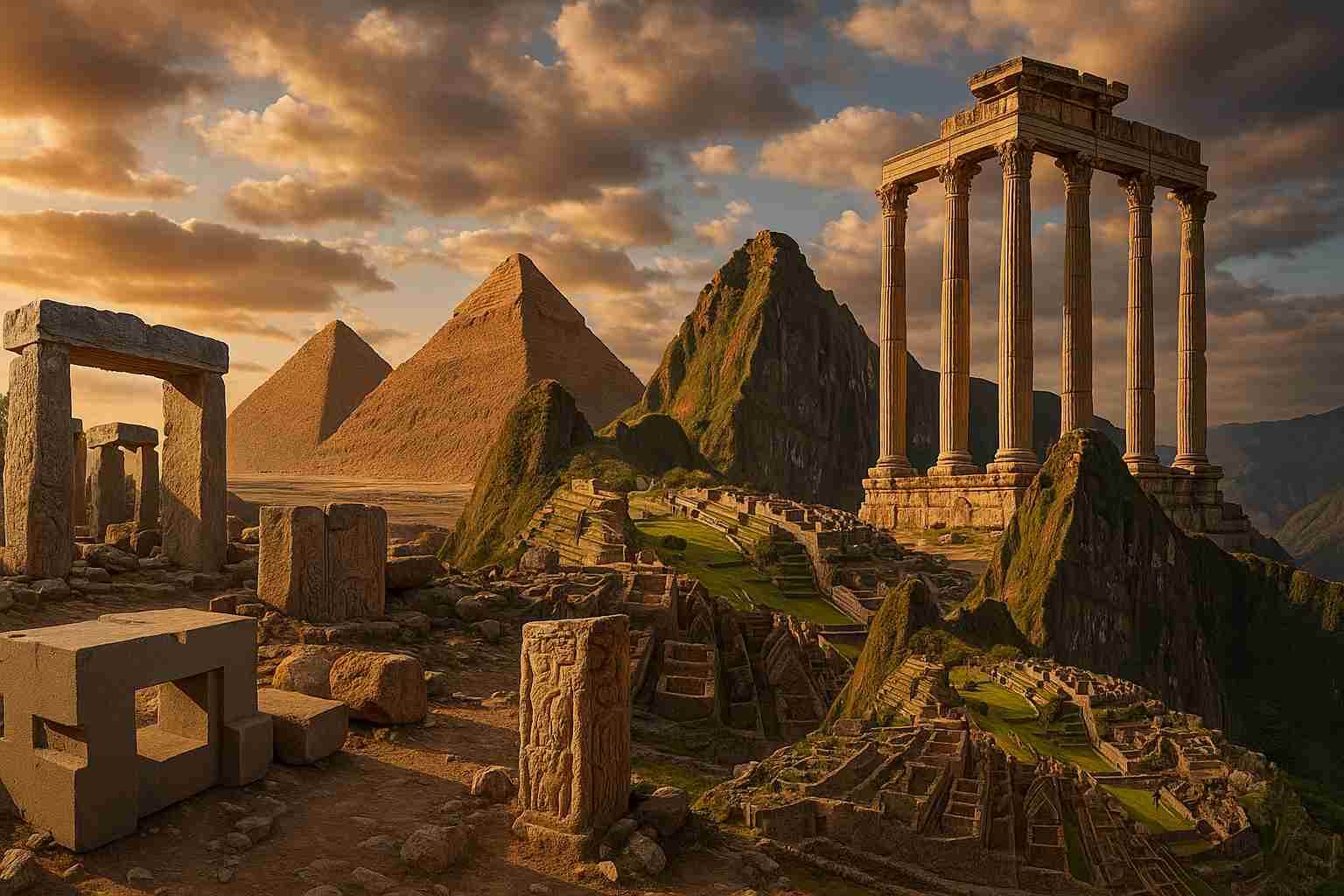Human history is full of mysteries, and some of the most intriguing ones are carved into stone. Across the globe, ancient ruins stand as silent witnesses to civilizations whose abilities still puzzle experts. Many of these sites feature architectural precision, astronomical alignments, or construction techniques that seem far ahead of their time. These remnants continue to fuel debates, inspire research, and spark the imagination, raising one big question: how did they do it?
1. Göbekli Tepe – Turkey
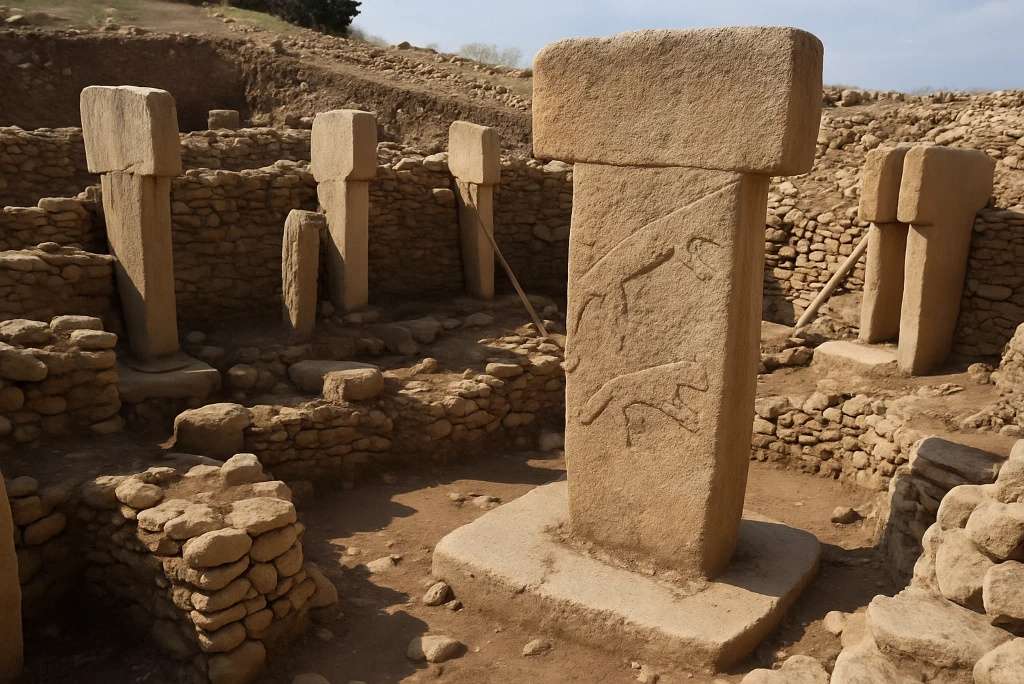
Dating back to around 9600 BCE, Göbekli Tepe predates Stonehenge by thousands of years and rewrites our understanding of early human society. This archaeological marvel features massive T-shaped stone pillars arranged in circles, carved with intricate animal motifs. What puzzles researchers is how a society of hunter-gatherers constructed such a complex site without agriculture or metal tools.
Some experts believe it may have served as a ceremonial or religious center, possibly making it the world’s first temple. Its sophistication suggests advanced social organization and knowledge. Excavations continue to uncover new findings, deepening the mystery. Ancient ruins research continues to explore its many unanswered questions. Read more from Smithsonian Magazine.
2. Puma Punku – Bolivia
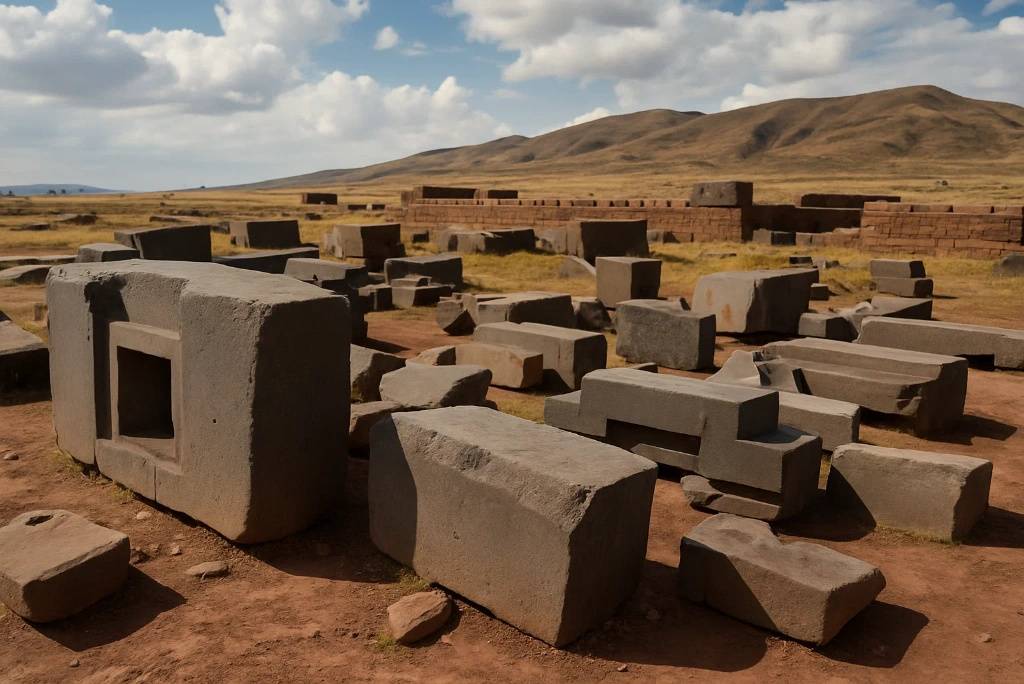
Part of the Tiwanaku complex near Lake Titicaca, Puma Punku is famed for its precisely cut stone blocks—some weighing over 100 tons—that fit together like puzzle pieces without mortar. The precision of the cuts, often resembling machine work, has sparked theories ranging from lost advanced technology to extraterrestrial involvement.
Modern engineers still marvel at the techniques used to transport and shape these massive stones at high altitudes. The purpose of Puma Punku remains uncertain, though it likely served ceremonial or religious roles. The ancient ruins research on Puma Punku is ongoing, with new theories emerging regularly. Learn more at National Geographic.
3. Stonehenge—England
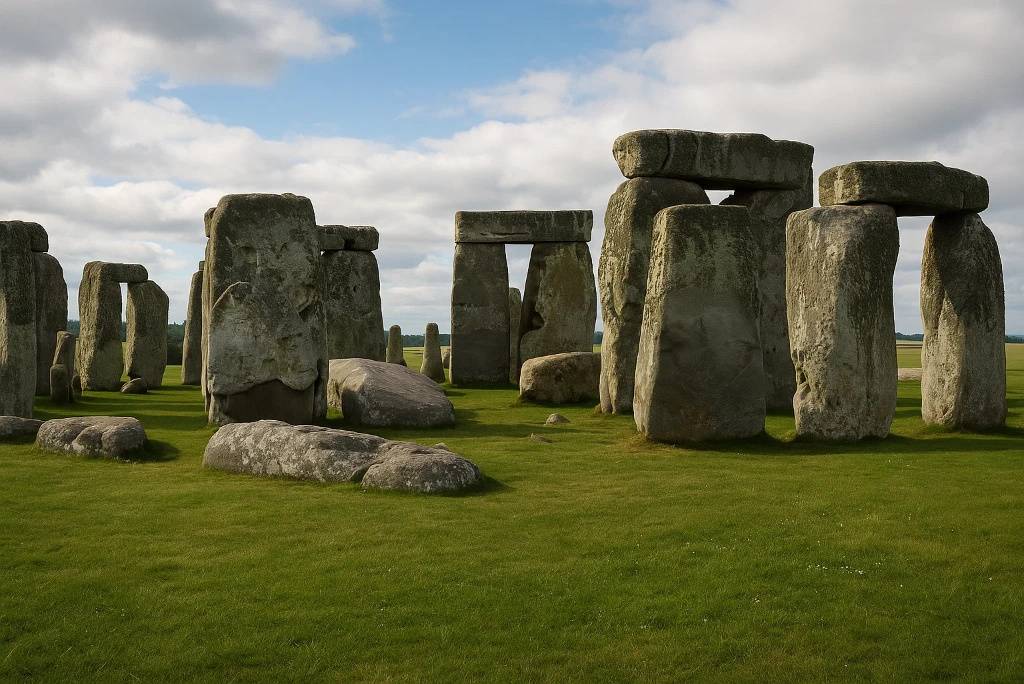
This iconic ring of standing stones, erected between 3000 and 2000 BCE, has long baffled archaeologists. Stonehenge’s exact purpose—whether a temple, burial site, or astronomical observatory—remains debated. The transport of its massive bluestones from quarries over 150 miles away poses another enduring mystery.
9Its alignment with the solstices suggests advanced astronomical knowledge. Despite decades of study, Stonehenge continues to inspire awe and speculation about the ingenuity of its builders. Ancient ruins research into Stonehenge has led to new theories about its purpose and construction. Visit English Heritage for details. Visit English Heritage for details.
4. Ba’albek – Lebanon
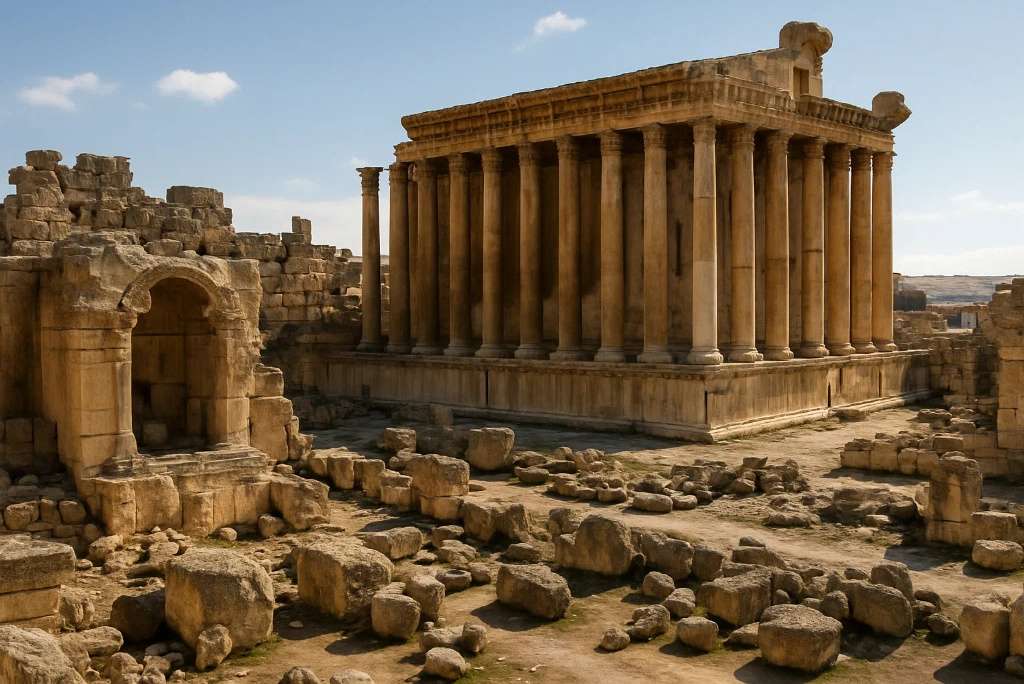
The ruins of Ba’albek include the massive Roman temple complex of Heliopolis, featuring the colossal Trilithon stones, each weighing around 800 tons. How these blocks were quarried, transported, and precisely positioned remains unclear.
While Roman engineering prowess explains much of the site, some stones predate Roman construction, hinting at earlier, possibly lost, techniques. Ba’albek served as a significant religious center, but the origins of its megalithic foundations fuel ongoing debates. Ancient ruins research into Baalbek continues to examine the origins of these massive stones. Explore more from UNESCO.
5. Machu Picchu – Peru
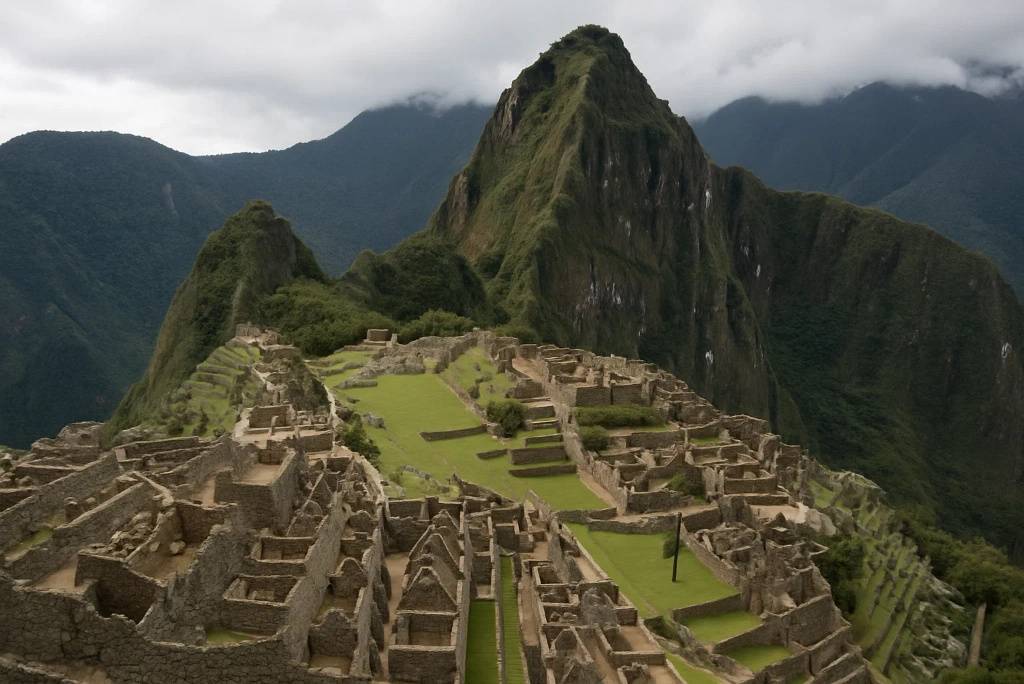
Perched high in the Andes, this 15th-century Incan citadel amazes with its terraced design, sophisticated drainage systems, and precisely cut stones that fit together without mortar. How the Incas transported and carved these massive stones on such rugged terrain, using only Bronze Age tools, is a mystery.
Machu Picchu also features structures aligned with astronomical events, reflecting deep cosmological knowledge. Rediscovered in 1911, it remains a testament to the ingenuity of the Inca civilization. Ancient ruins research on Machu Picchu is continually uncovering the secrets behind its construction. See details at UNESCO.
6. The Great Pyramids of Giza – Egypt
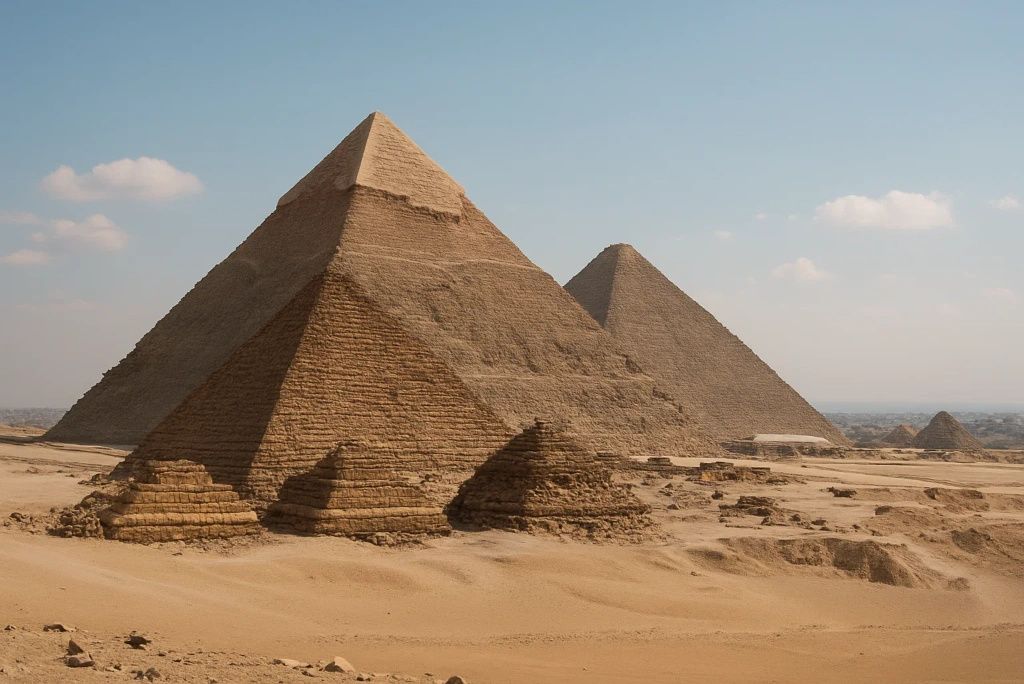
Perhaps the most famous ancient structures in the world, the Great Pyramids were built around 4,500 years ago. Their precise alignment with cardinal points, the massive size of the limestone blocks, and the logistics of their construction continue to intrigue scholars. While theories abound—from ramps to levers—the exact methods remain debated.
These pyramids served as monumental tombs, yet their construction reflects a level of engineering that seems to defy the technology of the time. Ancient ruins research into the Pyramids continues to offer new insights into their construction techniques. Discover more from BBC.
7. Easter Island Moai – Chile
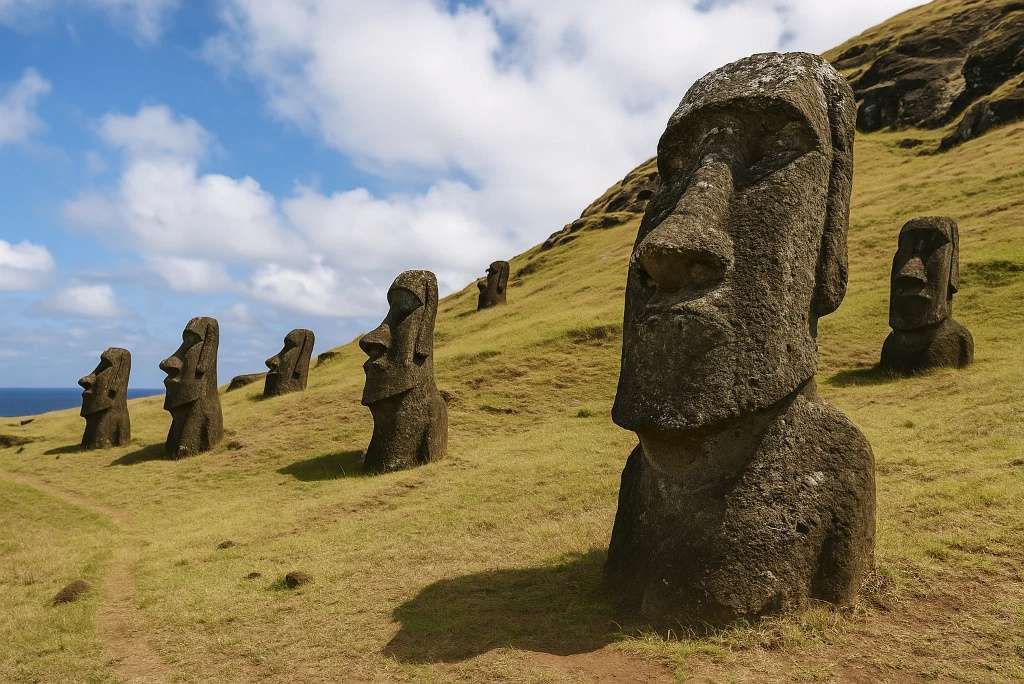
The remote island of Rapa Nui hosts nearly 1,000 massive stone statues called Moai, carved between 1250 and 1500 CE. These monolithic figures, some weighing over 80 tons, were transported several miles from quarries to their resting places. How the islanders achieved this feat using limited tools and resources remains a subject of debate.
The Moai are believed to represent deified ancestors, showcasing the cultural and spiritual significance of these extraordinary creations. Ancient ruins research has made significant strides in understanding the methods used to transport these colossal statues. Learn more at National Geographic.
8. Angkor Wat – Cambodia
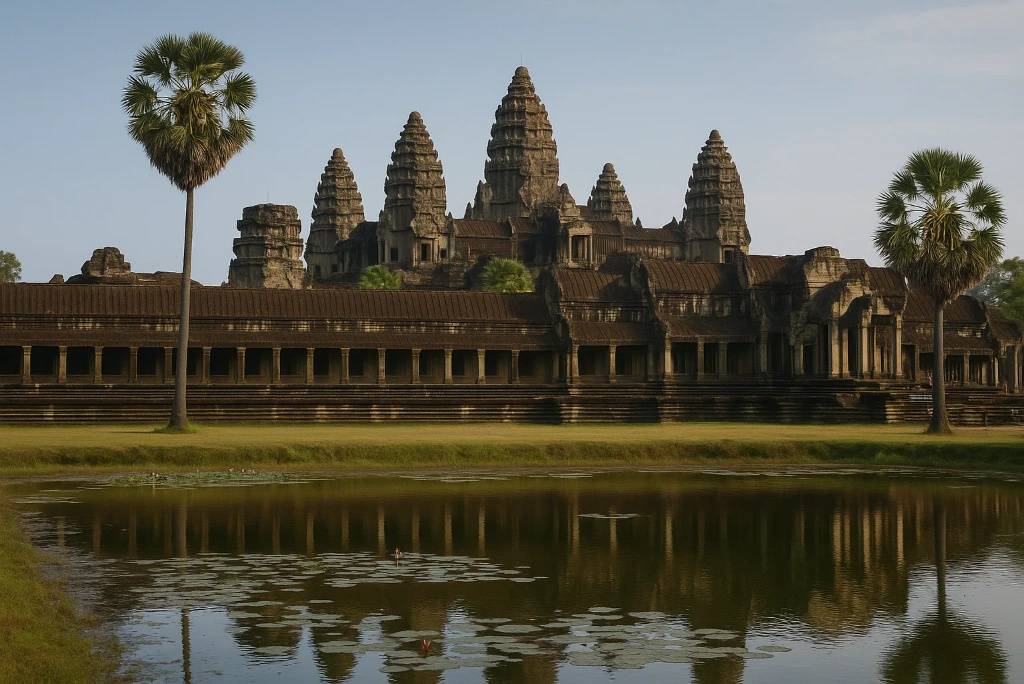
Built in the early 12th century, Angkor Wat is the largest religious monument in the world. Its precise architectural layout and elaborate carvings are astonishing, but what truly intrigues researchers is its alignment with celestial events. Studies suggest the temple complex mirrors the constellation Draco, hinting at sophisticated astronomical knowledge.
The sheer scale and artistry of Angkor Wat, constructed from millions of sandstone blocks, raise questions about the Khmer Empire’s engineering capabilities. Ancient ruins research continues to reveal new aspects of this remarkable site. Explore more at UNESCO.
9. Teotihuacan – Mexico
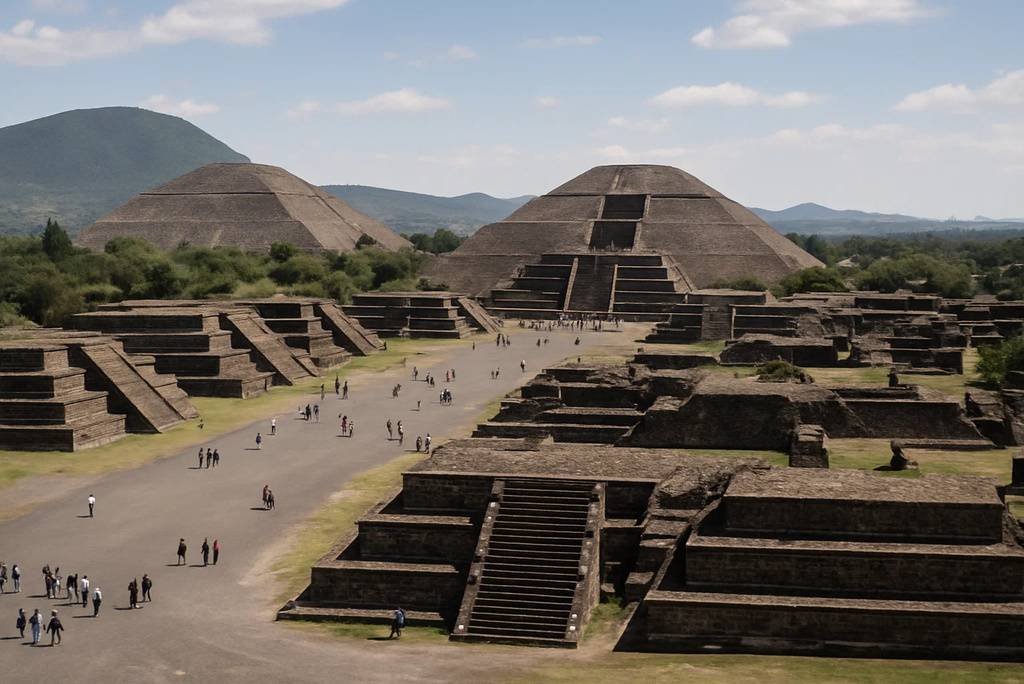
This ancient Mesoamerican city, established around 100 BCE, features massive pyramids like the Pyramid of the Sun and the Pyramid of the Moon. Teotihuacan’s grid-like urban planning and astronomical alignments suggest advanced knowledge of cosmology and city design.
Yet, the identity of its builders remains a mystery, as the city predates the Aztecs by centuries. The techniques used to construct its monumental structures continue to fascinate archaeologists. Ancient ruins research on Teotihuacan is ongoing, with new discoveries constantly reshaping our understanding of its builders. See details at Britannica.
10. Sacsayhuamán – Peru
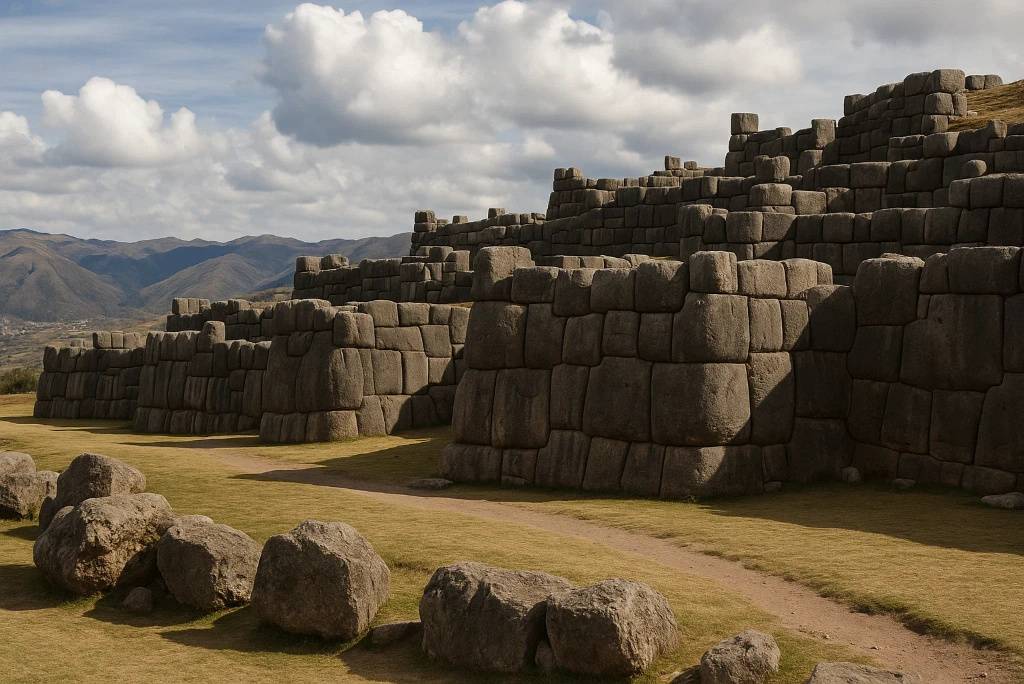
Located near Cusco, this Incan fortress features massive zigzagging walls made of tightly fitted stones, some weighing over 200 tons. The precision of the stonework—achieved without mortar—has led to speculation about the techniques used.
Earthquake-resistant design elements reveal a deep understanding of structural engineering. Sacsayhuaman likely served both military and ceremonial purposes, symbolizing Incan power and ingenuity. Ancient ruins research into Sacsayhuaman continues to shed light on its construction and purpose. Read more at Peru’s official tourism site.
11. Chichen Itza – Mexico
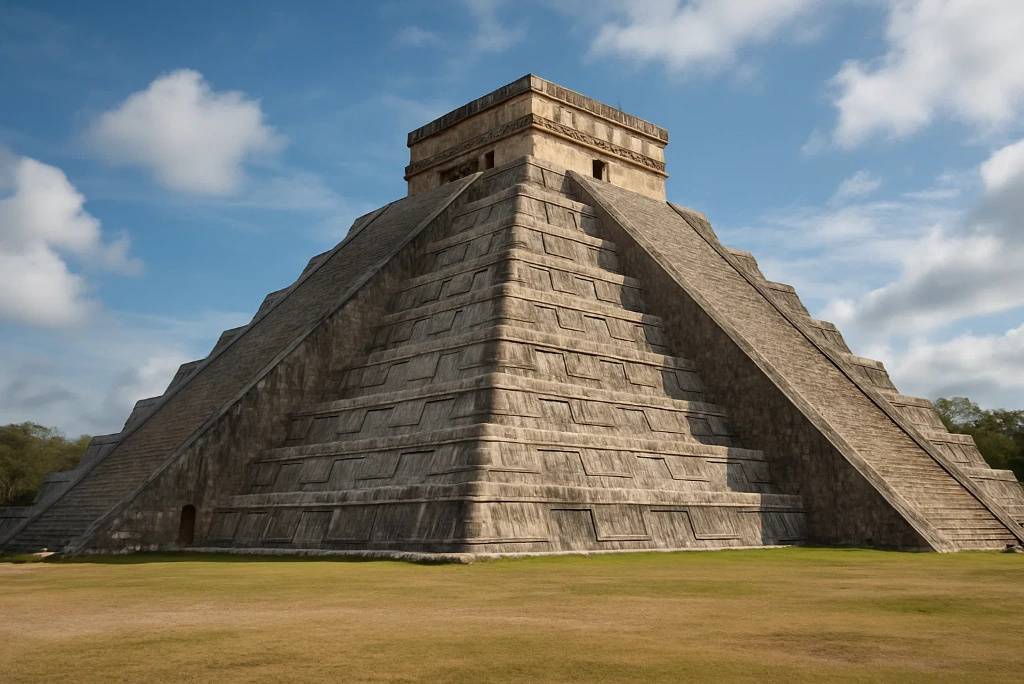
One of the most iconic Mayan sites, Chichen Itza boasts the pyramid of El Castillo, which doubles as a precise astronomical calendar. During the equinoxes, a serpent-like shadow appears on the pyramid steps, illustrating the Mayans’ advanced understanding of celestial cycles.
The city also includes a massive ball court, temples, and an observatory, all constructed with remarkable precision. Its cultural and scientific achievements make it a standout among Mesoamerican ruins. Ancient ruins research has uncovered significant details about the site’s astronomical functions. Learn more at UNESCO.
12. Petra – Jordan
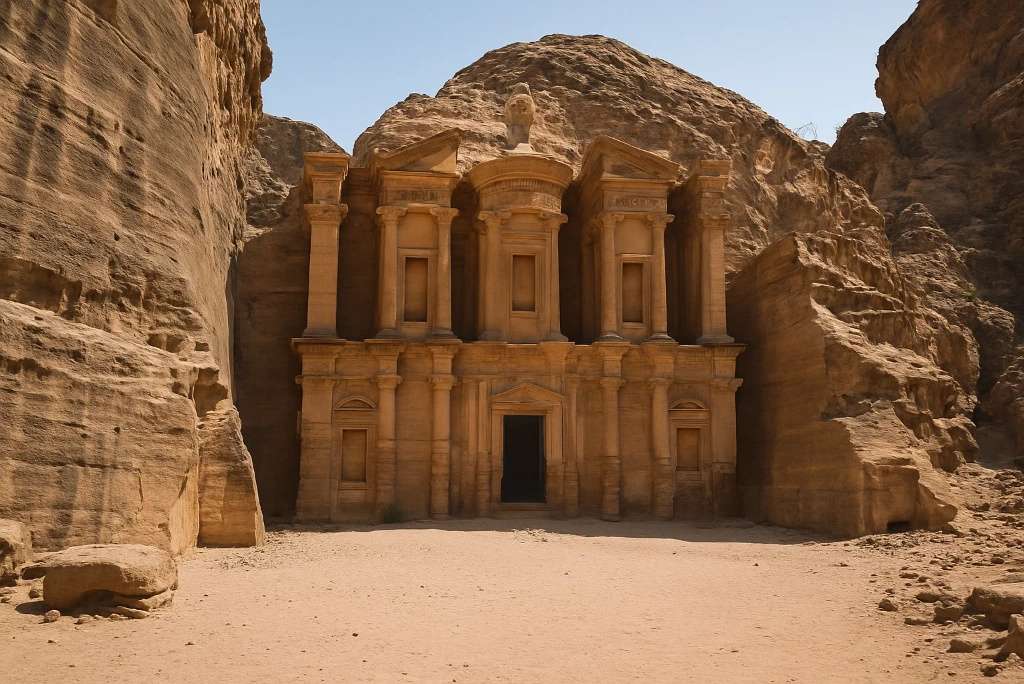
Carved directly into rose-red cliffs, Petra flourished as a Nabatean trading hub around the 1st century BCE. The intricate facades, like the famous Treasury, demonstrate advanced stone-carving techniques. Petra also featured sophisticated water management systems that sustained life in the harsh desert.
How the Nabateans achieved such monumental artistry and engineering in such an arid, isolated region continues to inspire researchers. Ancient ruins research is ongoing to understand Petra’s unique engineering solutions. Explore more at UNESCO.
13. The Hypogeum of Ħal-Saflieni – Malta
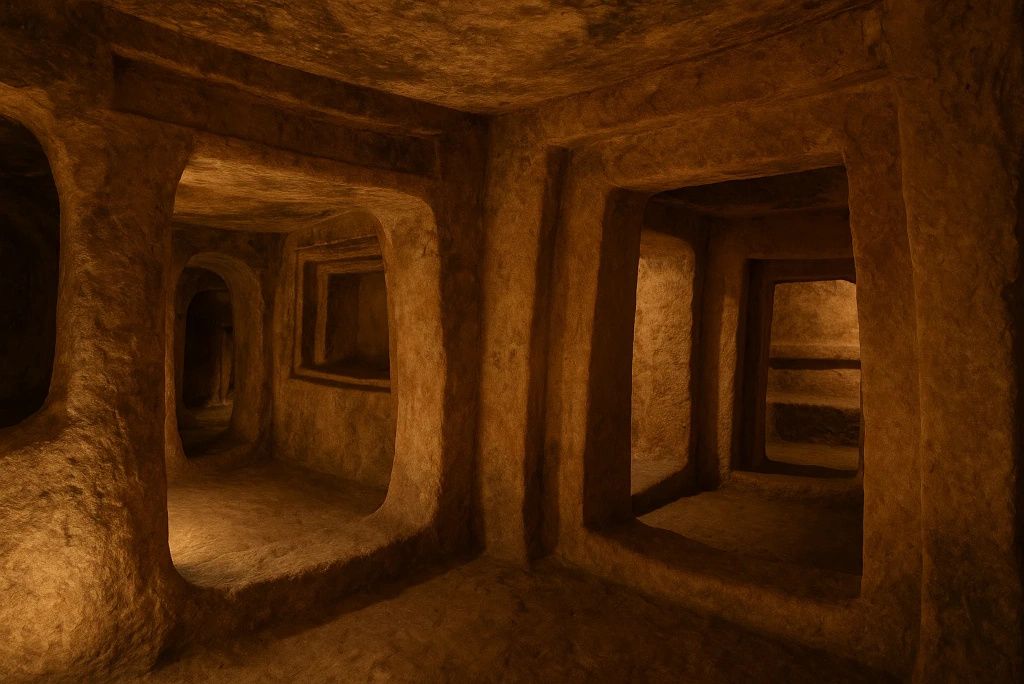
Dating back to around 4000 BCE, this underground complex is an architectural marvel with multiple levels, chambers, and intricate carvings. Used for both burial and ritual purposes, the Hypogeum also has unique acoustic properties that suggest deliberate design.
Its construction, involving the excavation of large limestone blocks with primitive tools, raises questions about the technical capabilities of its builders. Ancient ruins research continues to examine the acoustics and construction methods of the Hypogeum. Read more at Heritage Malta.
14. Derinkuyu Underground City – Turkey
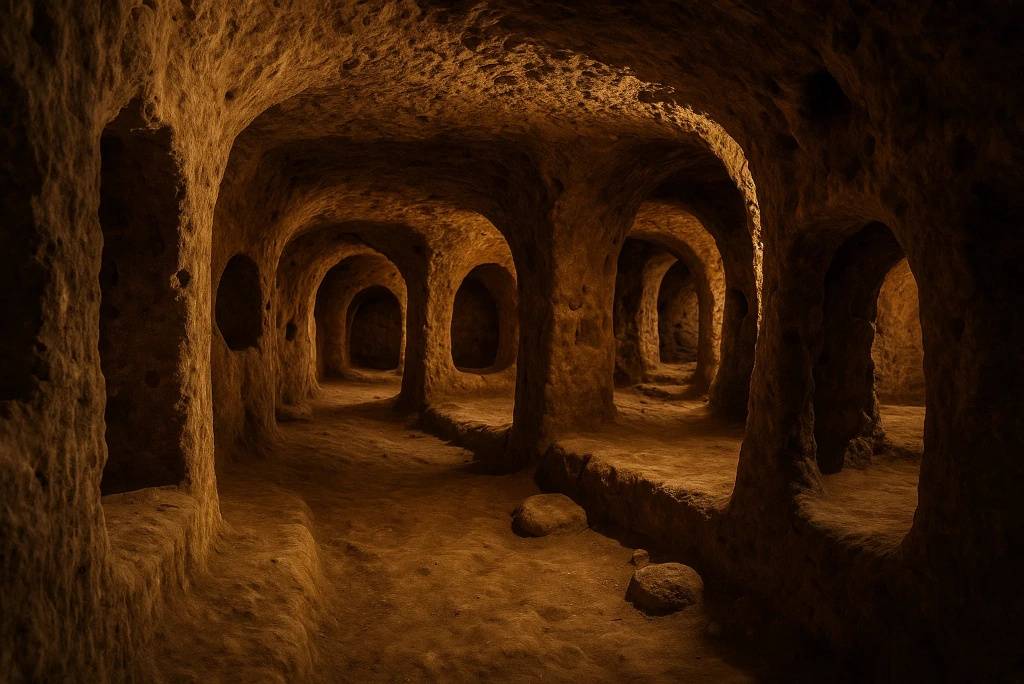
Beneath the Cappadocia region lies Derinkuyu, an underground city extending over 200 feet deep and capable of housing tens of thousands of people. Built around the 8th–7th centuries BCE, it includes ventilation shafts, storage rooms, and even a school. How ancient builders carved this sprawling subterranean network with limited tools remains a mystery.
It’s believed to have provided refuge from invaders, showcasing incredible strategic and engineering foresight. Ancient ruins research on Derinkuyu continues to reveal new details about this incredible subterranean complex. Learn more at Britannica.
15. The Yonaguni Monument—Japan
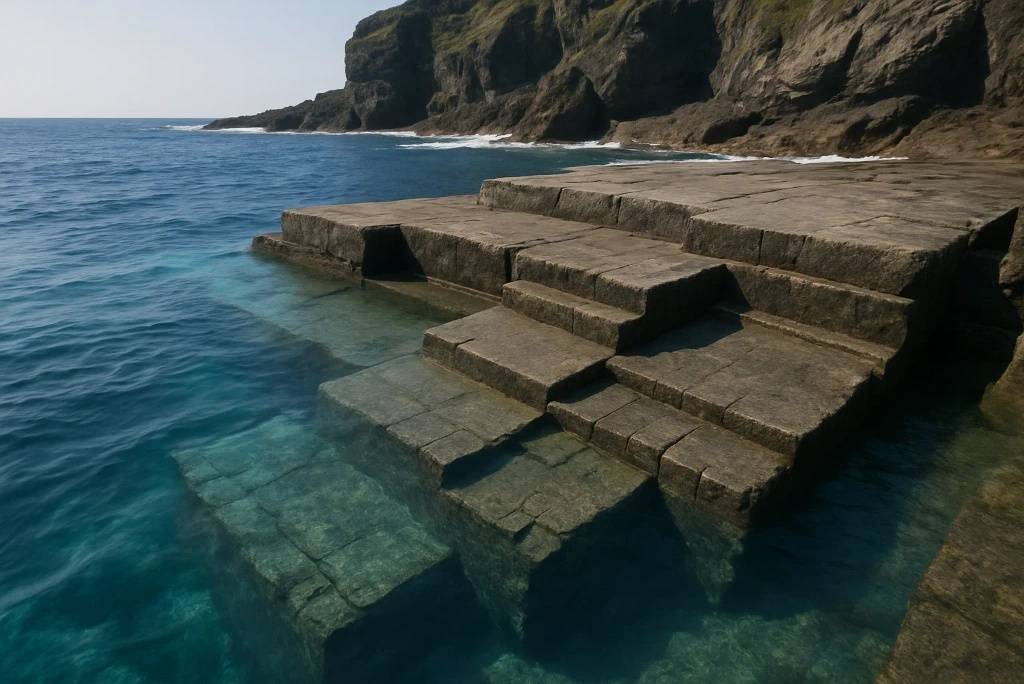
Discovered off the coast of Yonaguni in 1986, this underwater structure features terraced platforms, steps, and flat surfaces that resemble man-made architecture. Debate rages over whether it’s a natural geological formation or an ancient submerged city dating back to 10,000 BCE.
If proven artificial, it could rewrite the history of early human civilization in the region. The Yonaguni Monument remains one of archaeology’s most controversial sites. Ancient ruins research into the Yonaguni Monument has produced mixed conclusions about its origins. Read more at BBC.

